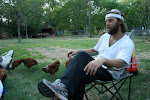 arriving in Japan where it developed and gained further popularity.
arriving in Japan where it developed and gained further popularity.
In the last days of the 19th century, some Jiu-Jitsu masters emigrated from Japan to other continents, teaching the martial arts as well as taking part in fights and competitions.Esai Maeda Koma, also known as "Conde Koma," was one such master. After traveling with a troupe which fought in various countries in Europe and the Americas, Koma arrived in Brazil in 1915, and settled in Belem do Para the next year, where he met a man named Gastao Gracie.The father of eight children, among them five boys and three girls, Gastao became a Jiu-Jitsu enthusiast and brought his oldest son, Carlos, to learn from the Japanese master.
For a naturally frail fifteen-year old Carlos Gracie, Jiu-Jitsu became a method not simply for fighting, but for personal improvement. At nineteen, he moved to Rio de Janeiro with his family and began teaching and fighting. In his travels, Carlos would teach classes, and also proved the efficiency of the art by beating opponents who were physically stronger. In 1925, he returned to Rio and opened the first school, known as the "Academia Gracie de Jiu-Jitsu."
 Since then, Carlos started to share his knowledge with his brothers, adapting and refining the techniques to the naturally weaker characteristics of his family. Carlos also taught them his philosophies of life and his concepts of natural nutrition. Eventually, Carlos became a pioneer in creating a special diet for athletes, "the Gracie diet," which transformed Jiu-Jitsu into a term synonymous with health.
Since then, Carlos started to share his knowledge with his brothers, adapting and refining the techniques to the naturally weaker characteristics of his family. Carlos also taught them his philosophies of life and his concepts of natural nutrition. Eventually, Carlos became a pioneer in creating a special diet for athletes, "the Gracie diet," which transformed Jiu-Jitsu into a term synonymous with health.Having created an efficient self defense system, Carlos Gracie saw in the art a way to become a man who was more tolerant, respectful, and self-confident. With a goal of proving Jiu-Jitsu’s superiority over other martial arts, Carlos challenged the greatest fighters of his time. He also managed the fighting careers of his brothers. Because they were fighting and defeating opponents fifty or sixty pounds heavier, the Gracies quickly gained recognition and prestige.
Attracted to the new market which was opened around Jiu-Jitsu, many Japanese practitioners came to Rio, but none were able to establish schools as successful as the Gracies. This was due to the fact that the Japanese stylists were more focused on takedowns and throws, and the Jiu-Jitsu the Gracies practiced had more sophisticated ground fighting and submission techniques. Carlos and his brothers changed and adapted the techniques in such a way that it completely altered the complexion of the international Jiu-Jitsu principles. These techniques were so distinctive to Carlos and his brothers that the sport became attached to a national identity, and is now commonly known as "Brazilian Jiu-Jitsu," practiced by martial artists all over the world, including Japan. With the creation of an official governing body to oversee the administration of the sport, including competition rules and the grading system, the era of sport Jiu-Jitsu competitions was started. Today, Jiu-Jitsu is a highly-organized sport, with an International Federation as well as a Brazilian National Confederation, both founded by Master Carlos Gracie Jr. Through his work with the Confederation of Brazilian Jiu-Jitsu, Carlos Gracie Jr. contributed to the growth of the sport by holding some of the first organized competitions. Currently, the IBJJF and CBJJ holds competitions in Brazil, the United States, Europe, and Asia, realizing Carlos' original dream of spreading Jiu-Jitsu around the world.
Taken from- www.ibjjf.org "International Brazilian Jiu-Jitsu Federation"
WOD: 10-9-8-7-6-5-4-3-2-1 reps for time
Dead Lift (205lbs)
Med Ball Clean (20lbs)
Push-ups
Time 12:27


No comments:
Post a Comment